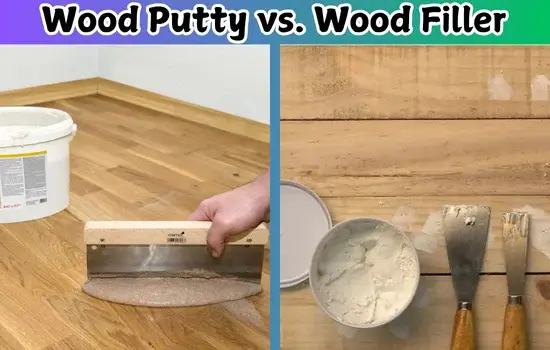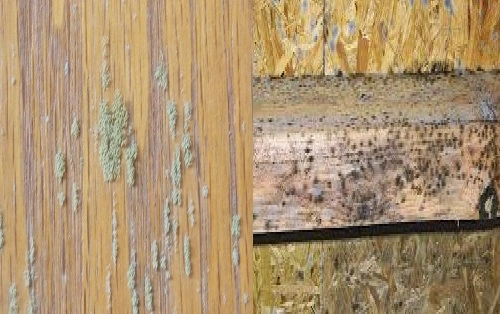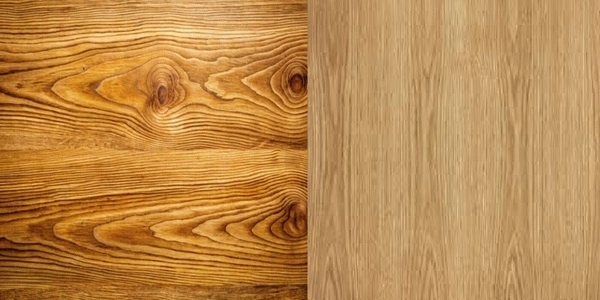When working on woodworking projects, furniture restoration, or general household repairs, you may encounter blemishes, cracks, and holes that need to be filled. At this stage, you’ll come across two main products: wood putty and wood filler. While both materials are designed to hide imperfections, they are not interchangeable. Understanding their unique properties and specific applications is crucial for achieving a professional and lasting finish. This article will explain the differences between wood putty and wood filler, when to use each, and the advantages they bring to your project.
What is Wood Putty?
Wood putty, often referred to as plastic wood, is a pliable, petroleum-based product that remains flexible after drying. It is primarily used for fixing minor imperfections such as small dents, cracks, or nail holes on finished wood surfaces. Unlike wood filler, wood putty contains oils, which give it a degree of elasticity that prevents cracking as the wood expands and contracts over time.
Key Characteristics of Wood Putty:
- Petroleum-based: It often contains chemicals, making it ideal for outdoor use but unsuitable for raw or unfinished wood.
- Stays pliable: Wood putty doesn’t fully harden, which allows it to move with the wood as humidity or temperature changes.
- Wide color variety: It comes in different colors to match stained or finished wood surfaces perfectly.
- Requires a finish: Because of its oily nature, wood putty adheres best to stained, painted, or sealed surfaces.
- Best for outdoor use: Its flexibility and moisture resistance make it ideal for exterior repairs like decks, outdoor furniture, or window frames.
What is Wood Filler?
Wood filler, on the other hand, is a water-based or solvent-based product that hardens completely after drying. It is primarily used for filling gaps, holes, or cracks in unfinished wood. Unlike wood putty, it dries rigid, making it ideal for sanding, staining, and painting. Wood filler is an excellent choice for projects requiring a smooth, hard surface for finishing.
Key Characteristics of Wood Filler:
- Water-based or solvent-based: Water-based fillers are easier to clean up and ideal for indoor projects. Solvent-based fillers are stronger and suitable for heavy-duty applications.
- Hardens completely: Once dry, wood filler forms a rock-solid surface that can be sanded or stained.
- Best for unfinished wood: It works best when applied to raw wood surfaces that will later be stained, painted, or finished.
- Not flexible: Unlike putty, wood filler does not expand or contract with changes in temperature or humidity.
- Perfect for indoor use: Its ability to harden and take on finishes makes it ideal for furniture repairs, cabinets, and indoor trim.
Wood Putty vs. Wood Filler: The Key Differences

| Feature | Wood Putty | Wood Filler |
|---|---|---|
| Material Base | Petroleum or oil-based | Water-based or solvent-based |
| Flexibility | Stays pliable after drying | Hardens completely |
| Best Use | Finished or stained wood surfaces | Unfinished wood surfaces |
| Sandability | Cannot be sanded | Can be sanded to a smooth finish |
| Stainable/Paintable | Limited, but comes in pre-matched colors | Fully stainable and paintable |
| Moisture Resistance | Excellent for outdoor applications | Less resistant to moisture, best indoors |
When to Use Wood Putty
Wood putty is ideal for small touch-ups on finished or stained wood surfaces. For example:
- Repairing nail holes on baseboards: After painting or staining, apply wood putty to hide imperfections.
- Filling small cracks on furniture: When repairing antique furniture or stained wood, use color-matched putty.
- Outdoor projects: Wood putty is weather-resistant, making it ideal for decks, window frames, or exterior furniture that expands and contracts.
Pro Tip: If you’re working with outdoor wood, opt for a putty labeled “exterior-grade” for maximum durability against moisture and temperature changes.
When to Use Wood Filler
Wood filler is the go-to solution for raw or unfinished wood, especially when you plan to sand, stain, or paint the surface. Key applications include:
- Filling large cracks or gouges: Wood filler provides a solid base when repairing deeper imperfections in indoor furniture or trim.
- Preparing wood for staining: If you’re staining a tabletop, cabinet, or hardwood floor, wood filler ensures a smooth, uniform finish.
- DIY woodworking projects: It is perfect for home projects like building shelves, repairing cabinets, or creating wooden decor.
Pro Tip: Always overfill the damaged area slightly because wood filler tends to shrink as it dries. After it hardens, sand it smooth to ensure a seamless finish.
Choosing the Right Product for Your Project
- Indoor vs. Outdoor: Use wood putty for exterior projects because it resists moisture and temperature changes. Use wood filler indoors for repairs requiring sanding or staining.
- Finished vs. Unfinished Wood: If the wood is already finished or stained, go with wood putty. For unfinished wood, wood filler is the better option.
- Depth of Repair: For minor blemishes or nail holes, wood putty suffices. For deeper gaps and gouges, wood filler provides a hard, durable fill.
Final Thoughts
Wood putty and wood filler are invaluable tools for woodworkers, furniture enthusiasts, and homeowners alike, but knowing their differences will help you choose the right product. If you’re dealing with finished wood or exterior surfaces, opt for wood putty for its flexibility and moisture resistance. For unfinished wood or projects requiring sanding and staining, wood filler is the clear winner.
By understanding their unique properties and applications, you can achieve seamless repairs and flawless finishes, ensuring that your woodworking projects and furniture look their best for years to come. Whether you’re fixing antique furniture, patching up a floor, or creating a new wood piece, selecting the right product makes all the difference.

